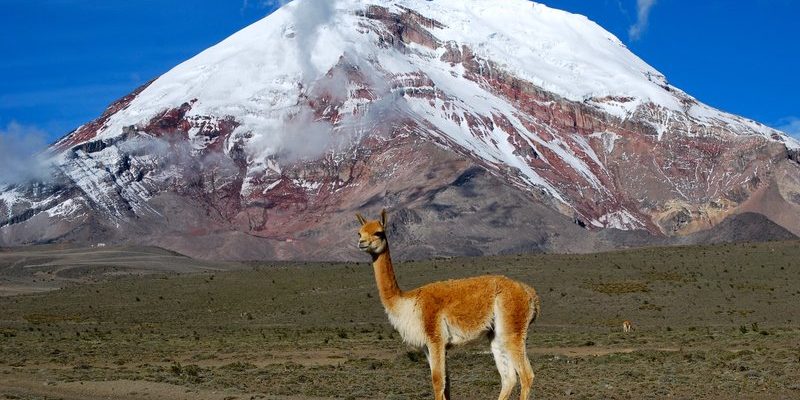![Comparing The Vicuna Vs. [Similar Species]](https://gudri.com/wp-content/uploads/2025/06/Comparing_The_Vicuna_Vs___Similar_Species__image_0.jpg)
Let’s dive into what makes the vicuna and alpaca special. Think of the vicuna as the elegant mountain dweller, known for its fine wool and wild spirit. In contrast, the alpaca is more like the friendly neighbor who’s always happy to greet you, known for its domesticated nature and variety of fleece. So, grab a cup of coffee, and let’s explore these fascinating animals side by side!
A Quick Overview of Vicunas and Alpacas
Both vicunas and alpacas are native to South America, primarily found in Peru, Bolivia, and Chile. While they share a common ancestry, their environments, appearances, and uses differ quite a bit. Vicunas are wild animals, usually found at high altitudes in the Andes, where they graze on tough grasses. On the other hand, alpacas are domesticated and bred for their soft fleece, making them a staple on farms.
Here’s a quick side-by-side of the two:
| Feature | Vicuna | Alpaca |
| Habitat | Wild, high altitudes | Domesticated, farms |
| Fleece Type | Fine, softer | Variety, thicker |
| Behavior | Shy, skittish | Friendly, sociable |
Physical Differences: How to Tell Them Apart
At first glance, vicunas and alpacas might seem quite similar, but look closer, and you’ll notice key differences.
Size and Build: Vicunas are generally smaller and more slender than alpacas, weighing around 90 pounds and standing about 3 feet tall at the shoulder. Alpacas, on the other hand, can weigh anywhere from 120 to 200 pounds and are stockier in build. This size difference is important, especially when observing them in their natural or farm settings.
Fleece Characteristics: If you’re someone who appreciates fine textiles, you’d be interested to know that vicuna wool is one of the most expensive in the world. It’s incredibly soft and light, with a unique, silky sheen. Alpaca fleece is also prized but comes in a wider variety of colors (over 22 shades!) and is thicker. Keep this in mind if you ever find yourself in a yarn store!
Habitat and Lifestyle: Where They Live
Vicunas thrive in the harsh, high-altitude environments of the Andes, where the air is thin and the weather can be extreme. They are adapted to grazing on the tough grasses that grow in these rocky terrains. Their wild nature makes them less accustomed to human interaction, which can make spotting them a treat for hikers and nature enthusiasts.
In comparison, alpacas have been domesticated for thousands of years. They are typically found in farm settings, where they enjoy a more sheltered life. Their social nature means they do best in groups, often grazing peacefully alongside other alpacas. If you ever visit a farm, you might notice how they interact with one another—it’s quite charming!
Behavior and Temperament: Shy vs. Sociable
When it comes to behavior, vicunas tend to be shy and skittish. Their natural instinct is to flee from potential threats, which can make them difficult to observe up close. Picture trying to catch a glimpse of a wild deer—it takes patience and a little stealth!
Alpacas, on the other hand, are known for their friendly demeanor. They’re curious creatures that often approach humans with interest. Many people find spending time with alpacas therapeutic, as their calm and gentle nature is quite soothing. Imagine a cozy afternoon feeding them treats at a local farm—what a delightful experience!
Uses and Value: From Wool to Wildlife
The economic value of vicunas and alpacas varies significantly due to their differences in domestication. Let’s break this down.
Vicunas: Their wool is harvested once every two years, making it rare and sought after. The process is sustainable, as it doesn’t harm the animals. Because of this, vicunas symbolize the conservation of wildlife in their natural habitat. Some communities even rely on the income generated from the sale of vicuna wool.
Alpacas: Unlike vicunas, alpacas are bred specifically for their fleece, which is harvested annually. This makes their wool more accessible and allows for a thriving textile industry. You might see alpaca products ranging from sweaters to socks in shops, celebrated for their warmth and softness.
Conservation Status: Wild vs. Domesticated
Conservation efforts for vicunas have ramped up in recent years due to their status as a wild species. They face threats from habitat loss and poaching, although regulations are now in place to protect them. You might be surprised to learn that vicunas were once endangered but have made a comeback thanks to these efforts.
Alpacas, being domesticated, don’t usually face the same conservation challenges. However, responsible breeding practices are essential to ensure their health and well-being. If you’re interested in supporting sustainable farming, look for farms that prioritize animal welfare and eco-friendly practices.
Fun Facts: The Quirky Side of Vicunas and Alpacas
Both animals have their share of interesting quirks that make them unique:
- Vicunas: They can run up to 50 miles per hour, making them one of the fastest camelids!
- Alpacas: They often hum when they’re content, which gives them a gentle, soothing presence.
- Both: They communicate through body language, using different postures and expressions to convey emotions.
Understanding these fun facts can deepen your appreciation for these unique animals and perhaps inspire you to learn more about other wildlife.
Final Thoughts: A Lesson in Diversity
Vicunas and alpacas may belong to the same family, but they each bring something special to the table. From their differences in habitat and behavior to their physical traits and economic significance, these animals highlight the beauty of biodiversity in our world. Whether you’re fascinated by the wild elegance of vicunas or the friendly nature of alpacas, there’s so much to admire.
So next time you find yourself in a conversation about these incredible creatures, you’ll be equipped with knowledge and insights that make them more than just another animal on a farm or in the wild. Embrace the diversity of nature, and you’ll always find something new and exciting to explore!

